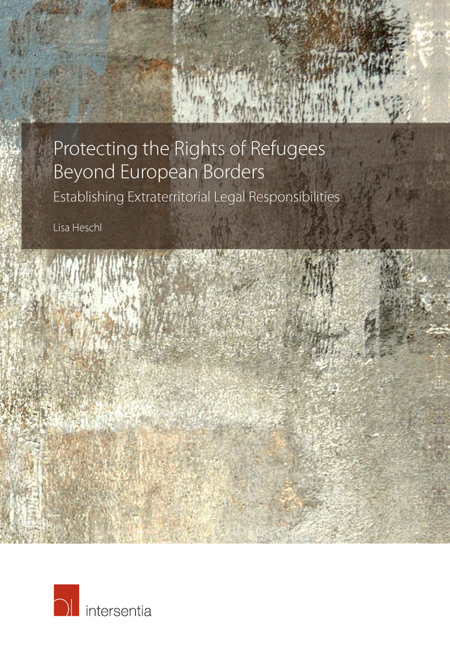 Protecting the Rights of Refugees Beyond European Borders
Protecting the Rights of Refugees Beyond European Borders Book contents
- Frontmatter
- Dedication
- Preface
- Acknowledgements
- Contents
- Table of Cases
- Table of Treaties, Instruments and Legislation
- List of Abbreviations
- Chapter 1 Introduction
- Chapter 2 The External Dimension of the European Migration and Asylum Policy
- Chapter 3 Extraterritorial Immigration Control Measures by EU Member States
- Chapter 4 Extraterritorial Immigration Control Measures by Frontex
- Chapter 5 Summary of Findings and Conclusions
- Bibliography
- Index
- About the Author
Chapter 2 - The External Dimension of the European Migration and Asylum Policy
Published online by Cambridge University Press: 12 October 2018
- Frontmatter
- Dedication
- Preface
- Acknowledgements
- Contents
- Table of Cases
- Table of Treaties, Instruments and Legislation
- List of Abbreviations
- Chapter 1 Introduction
- Chapter 2 The External Dimension of the European Migration and Asylum Policy
- Chapter 3 Extraterritorial Immigration Control Measures by EU Member States
- Chapter 4 Extraterritorial Immigration Control Measures by Frontex
- Chapter 5 Summary of Findings and Conclusions
- Bibliography
- Index
- About the Author
Summary
INTRODUCTION
The European continent has been shaped by immigration and emigration processes throughout its history. Due to the sensitivity of the issue of immigration and its perceived impacts on, e.g. the national labour markets and social systems, its regulation and management have been considered a core sovereign right of states. Under international law it was understood that the territorial supremacy of the nation-state entails the exclusive competence to exercise discretion on entry conditions for third-country nationals (TCN), to determine the rules for residence and to decide who has to leave the country. Nevertheless, this sovereign right is curtailed by international law obligations, in particular by general human rights law and the prohibition of refoulement, stipulating that no person may be expelled or returned to a country in any manner whatsoever where his or her life might be in danger. Furthermore, in the European Union (EU) context, national immigration legislative powers have been increasingly restrained by the transfer of competences to the supranational level.
The crossing of borders inherently encompasses an international and an external element. Accordingly, over the years, perception grew among European policy-makers that a successful immigration policy requires both an internal set of norms for managing immigration of TCNs and an external dimension involving third countries of origin and transit. Even though it took until the 1990s for concrete steps to be taken to formalise cooperation with third states, such cooperation can be considered a constant in the development of a common European migration and asylum policy from its very beginnings. Well before requiring formal competences in migration and asylum matters, the EU institutions noted the necessity of enhancing economic and political cooperation with third states and integrating migration and asylum in the EU's external relations in order to approach it most comprehensively. In 1999 the external dimension of migration and asylum was officially embraced in Tampere when the Conclusions of the European Council recognised the significance of cooperation with third countries in the field of Justice and Home Affairs (JHA). The Tampere Conclusions, even though mainly concerned with the harmonisation of national legislation on migration and asylum, for the first time provided a framework for discussions on external migration and asylum policies, referring JHA concerns to be ‘integrated in the definition and implementation of other Union policies and activities’ including external relations.
- Type
- Chapter
- Information
- Protecting the Rights of Refugees Beyond European BordersEstablishing Extraterritorial Legal Responsibilities, pp. 13 - 46Publisher: IntersentiaPrint publication year: 2018


